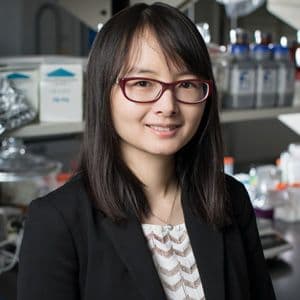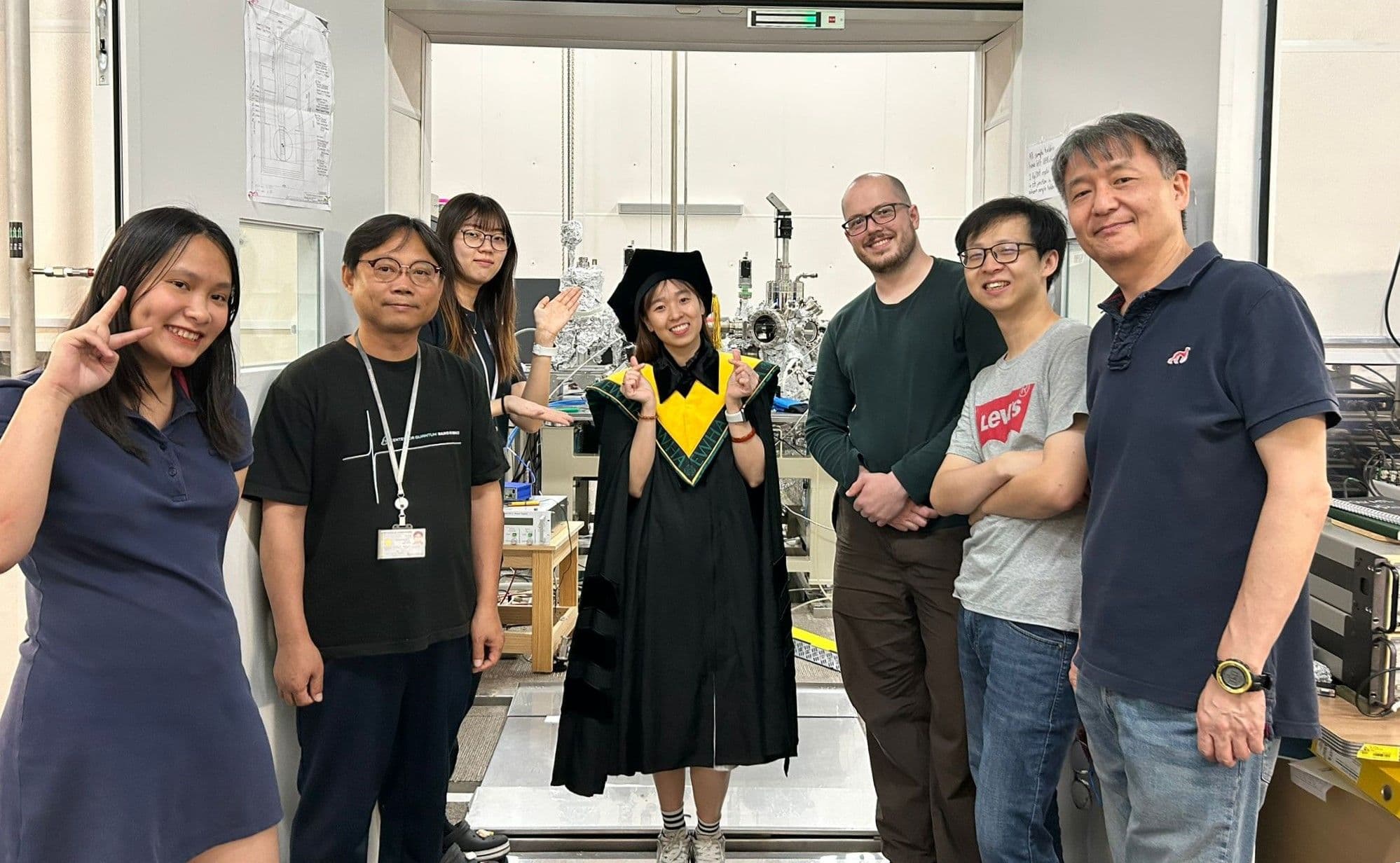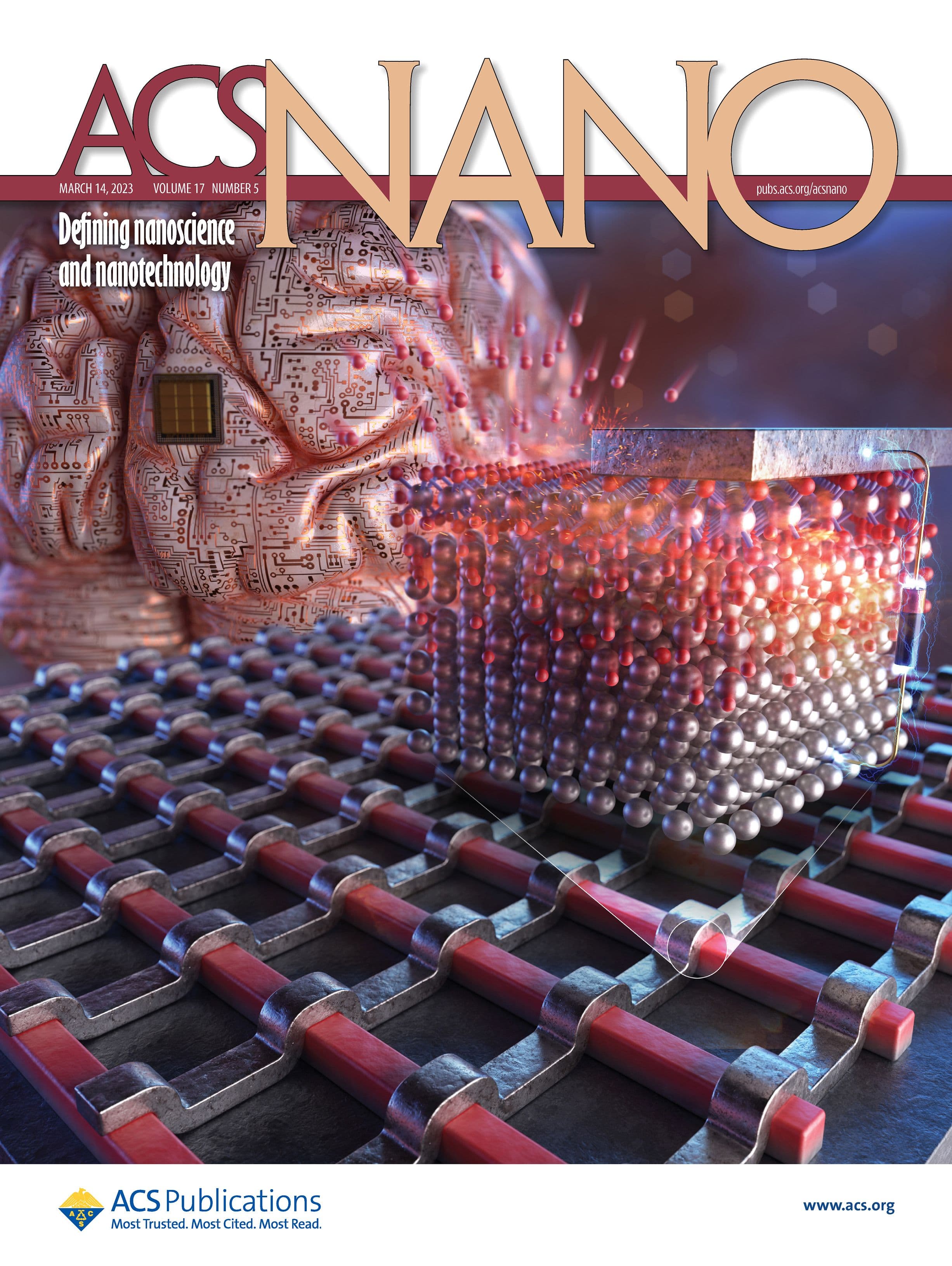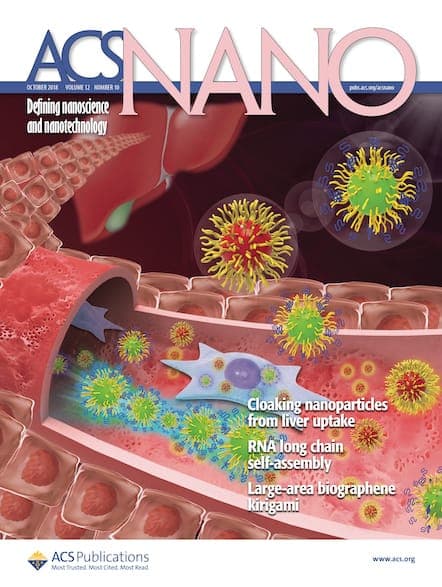Learn more about the 2025 winners of our ACS Nano Awards and what inspires their research in this series of interviews.

2025 ACS Nano Lectureship
The 2025 ACS Nano Lectureship honors two outstanding early career investigators conducting research in the areas of nanoscience and nanotechnology. This award is presented in partnership with ACS Nano. We are pleased to announce the 2025 winners:
- Dr. Qian Chen, University of Illinois, Urbana-Champaign, USA
- Dr. Jun Chen, University of California, Los Angeles, USA
We recently spoke with the winners to learn more about current research and future insights.
Meet Dr. Qian Chen

Dr. Chen is currently a full professor and Racheff Scholar in the Department of Materials Science and Engineering at the University of Illinois, Urbana-Champaign. She got her B.S. in chemistry from Peking University and her PhD degree from the same department with Prof. Steve Granick (2012). She completed her postdoctoral research with Prof. Paul Alivisatos at the University of California, Berkeley, under a Miller Fellowship. She became a faculty in 2015 and since then has received awards for the research in her group, such as the Forbes 30 under 30 Science List (2016), the AFOSR YIP award (2017), the NSF CAREER award (2018), the Sloan Research Fellow in Chemistry (2018), the ACS Unilever Award (2018), the Hanwha-TotalEnergies IUPAC Young Scientist Award (2022), the Soft Matter Lectureship (2023), the Provost's Award for Excellence in Graduate Student Mentoring (2024), the MRS Outstanding Early-Career Investigator Award (2024), the ACS Langmuir Lectureship (2025), and the ACS Nano Lectureship (2025).
Her group’s research focuses on imaging, understanding, and engineering soft, biological, and energy materials at the nanoscale.
What inspired you to pursue your area of research?
When I finished my PhD thesis study with Prof. Steve Granick, he gave me a book “PETIT POINT: a candid portrait on the aberrations of science” by de Gennes as a graduation gift. The book includes many life and career stories of scientists, some more complex than others because of human nature. Reading it was an eye-opening experience and it made me realize: Life is a marathon; instead of repeating what is known, I want to keep renovating my research, to push the boundaries of the unknown and to tackle what is considered impossible.
What advances has your lab made in the past five years?
In the past five years, my group has adapted and utilized a suite of “electron videography” methods to take dynamic movies of soft materials—both synthetic and biological—and energy materials at the previously inaccessible atomic to nanometer resolutions. Our philosophy is that one can’t understand or engineer what one cannot image. These real-space, real-time movies have given us new insights to find new solutions for applications. For example, we are able to make new optical and mechanical metamaterials from nanoparticle self-assembly, to control reactivities and phase transition in catalysts and battery materials, to understand polymer filtration materials, and to watch how proteins fluctuate to perform functions.
What’s next for your research?
I hope to further integrate artificial intelligence with electron videography imaging, to transform how we study systems of materials and biological systems of high levels of sophistication and new properties. These systems can be disordered, spatiotemporally heterogeneous, and hard to capture using existing theories. I see great potentials in using data and data science tools to understand and engineer those systems, and to establish new theoretical frameworks for learning and predictions.
What advice would you give to students who aspire to be where you are now?
My suggestion is to think about the “global energy landscape” of your career, rather than just finding a fast path to a “local potential well” of achievement. For example, take your time to think deeply and experiment thoroughly, whether in labs or on computer. Many of our experimental results are different from what we expected at the beginning. We could have disregarded them if we had not thought about them carefully and critically. And that’s how usually truth and new discoveries present themselves in front of you.
Meet Dr. Jun Chen

Dr. Jun Chen is a tenured Associate Professor in the Department of Bioengineering at the University of California, Los Angeles. His research centers on soft matter innovations for applications in healthcare and energy. With an h-index of 126, Dr. Chen has authored two books and published over 380 peer-reviewed journal articles, including 280 as corresponding author. He recently led his team at UCLA in the groundbreaking discovery of the giant magnetoelastic effect in soft materials—a phenomenon traditionally limited to rigid metals and alloys since its first observation in 1865. This pioneering work has opened a new paradigm for developing intrinsically waterproof and biocompatible soft bioelectronics, establishing his group at the forefront of this emerging field.
In addition to his research, Dr. Chen serves as the Executive Editor-in-Chief of Med-X and holds associate editor roles for Biosensors and Bioelectronics, MRS Communications, Soft Science, VIEW Medicine, FlexMat, cMat, and Textiles. He also serves as the advisory and editorial boards of more than 20 journals, including Matter, Materials Today, Materials Today Energy, Cell Reports Physical Science, The Innovation, Nano Trends, and Biomedical Technology, among others.
What inspired you to pursue your area of research?
In the realm of flexible bioelectronics—whether skin-interfaced wearable devices or implantable systems—operation often occurs in high-humidity environments due to exposure to sweat and internal body fluids. However, most current bioelectronic devices are not intrinsically waterproof. Enhancing their water resistance typically requires additional encapsulation layers, which often increase device thickness and degrade performance, such as reducing sensitivity. When I began my independent research at UCLA, I asked myself a fundamental question: Is it possible to develop intrinsically waterproof bioelectronic devices? To explore this, I considered various natural energy modalities—electricity, magnetism, heat, and light. Among these, magnetic fields are particularly promising because they can penetrate water without degradation by humidity. This led me to investigate the magnetoelastic effect in soft materials and its application as soft and intrinsically waterproof magnetoelastic bioelectronics.
Historically, magnetoelasticity has been observed only in rigid metals and alloys since its discovery in 1865, requiring mechanical pressures as high as 10 MPa—conditions incompatible with soft, flexible electronics. I hypothesized that it might be possible to extend the magnetoelastic effect to soft polymer systems. In 2021, our research group at UCLA successfully discovered a giant magnetoelastic effect in soft polymer composites. By incorporating magnetic nanoparticles into elastomeric matrices, we observed significant changes in magnetic flux density under mechanical pressure. This groundbreaking study demonstrated that magnetoelasticity could be realized in soft materials, with pressure thresholds reduced to around 10 kPa—readily achievable through natural biomechanical activities such as heartbeat, respiration, and ocular motion. Our team is now at the forefront of advancing this novel field of soft magnetoelastic bioelectronics, striving to apply it across a wide range of biomedical and healthcare technologies.
What advances has your lab made in the past five years?
The most pioneering contribution from my lab over the past five years has been the discovery of the giant magnetoelastic effect in soft materials, enabling new directions in bioelectronic applications. The magnetoelastic effect, also named as Villari effect and discovered by Italian physicist Emilio Villari in 1865, is the variation of the magnetic field of a material under mechanical stress. This effect has been traditionally observed in rigid metals and metal alloys with an externally applied magnetic field and has been overlooked in the field of soft bioelectronics for three reasons. First, the magnetization variation in the biomechanical stress range is limited. Second, the requirement of the external magnetic field induces structural complexity and bulkiness. Finally, there exists a six orders of magnitude difference in mechanical modulus between magnetoelastic metals/metal alloys and human tissue. After joining UCLA, I led my research group in the discovery of the giant magnetoelastic effect in a soft polymer system (Nature Materials 2021; Front Cover; Research Highlighted by Nature; Research Highlighted by Nature Materials), later in a liquid permanent fluidic magnet (Nature Materials 2024; Nature Electronics 2024; Research Highlighted by Nature, Nature Materials, and Nature Reviews Bioengineering).The giant magnetoelastic effect was further coupled with magnetic induction to invent a soft magnetoelastic generator (MEG) as a fundamentally new platform technology for building up human-body-powered soft bioelectronics. The soft magnetoelastic bioelectronics are intrinsically waterproof since the magnetic fields can penetrate water with negligible intensity loss. Thus, they demonstrated stable performance in wearable and implantable manners without any encapsulation. This breakthrough has opened alternative avenues for practical human-body-centered energy, sensing, and therapeutic applications.
With the continued effort of my UCLA group, the discovery of giant magnetoelastic effect in soft systems has been extensively introduced to various research areas as a fundamentally new working mechanism, including injectable and retrievable liquid bioelectronics, liquid acoustic sensing, pulse wave monitoring, speaking without vocal fold, haptic sensing, implantable cardiovascular monitoring, respiration monitoring, muscle physiotherapy, human-machine interface, personal thermoregulation, even wind, water wave, and biomechanical energy harvesting. Our group at UCLA is pioneering this research effort in discovering giant magnetoelastic effects in soft systems for bioelectronics and their applications for healthcare and energy.
What’s next for your research?
The giant magnetoelastic effect in soft systems represents a transformative scientific discovery, yet its full theoretical and experimental potential remains to be unlocked. Our group is deeply committed to pioneering a comprehensive understanding of this phenomenon and leveraging it as a foundational platform for a new class of intelligent, responsive technologies. By exploring its integration across a broad spectrum of applications—from bioelectronics to soft robotics—we strive to catalyze breakthroughs that redefine the interface between materials and life, ultimately driving profound societal advancement and future productivity.
What advice would you give to students who aspire to be where you are now?
Set ambitious goals, think beyond boundaries, work with unwavering dedication, and exhibit enduring resilience.
2025 ACS Nano Impact Award
This award is presented to a team of authors of a paper—or papers—published in ACS Nano in the two calendar years immediately prior to the year the award will be presented.
We are pleased to announce the 2025 winning team:
- Dr. Soo-hyon Phark, Dr. Yujeong Bae, Dr. Andreas J. Heinrich, Dr. Christoph Wolf, Dr. Yi Chen, Dr. Hong T. Bui, Dr. Yu Wang, Dr. Masahiro Haze, and Dr. Jinkyung Kim, Center for Quantum Nanoscience, Republic of Korea
Read the winning article: Double-Resonance Spectroscopy of Coupled Electron Spins on a Surface

Read the interview with the winning team:
How did this team come together to collaborate on this research?
A long-term goal of our research center, the Center for Quantum Nanoscience, is to develop an on-surface platform for quantum coherent science using multiple spin qubits via a bottom-up approach. We previously demonstrated quantum coherent control of a single spin on a surface (Science 366, 509–512) by employing scanning tunneling microscopy (STM) combined with electron spin resonance (ESR). Extending this technique to multiple spins, however, is nontrivial due to the extreme locality of the STM tunnel junction, which necessitates not only a novel conceptual approach but also the ability to implement it experimentally. To this end, the work presented in this paper was carried out through a collaboration among several teams in our center, each specializing in aspects of on-surface single-atom science and technology—such as bottom-up design of artificial nanostructures, radio-frequency control of single spins, and theoretical modeling.
What challenges did you overcome on the way to getting the results you reported in your paper?
A critical challenge in demonstrating a multiple-qubit platform using STM arises from the inherent limitations of the STM measurement mechanism, where an atomically sharp tip is used to manipulate single-atom positions and measure signals at the atomic scale. Two essential components for driving and detecting ESR in STM are: (1) a local inhomogeneous magnetic field and (2) a radio-frequency (RF) voltage across the tip–substrate junction—both provided by the STM tip. This constraint has limited quantum control and measurement to only those spins located directly within the STM tunnel junction. In this work, we demonstrate a novel method for driving and detecting the ESR of an atomic spin located far from the tip apex—a 'remote spin'. This was achieved by generating a local magnetic field at the remote spin site using a nearby single-atom magnet and by integrating a multi-frequency RF circuit, whose frequency can be selectively tuned to the resonance of the remote spin. Combined with atom manipulation techniques, this remote-control method extends the capabilities of STM, enabling coherent control in a multi-spin quantum platform.
What new research are you doing to build on the findings you described in your paper?
In this work, we demonstrated continuous-wave (CW) double electron–electron spin resonance (DEER) spectroscopy in an STM, showcasing the ability to drive and detect the resonances of coupled atomic spins on a surface. Building on this, we further developed pulsed double-resonance ESR, which enabled us to achieve quantum coherent control of two and three qubits on a surface (Science 382, 87–92). Both CW and pulsed double-resonance techniques now serve as key experimental approaches in our ongoing research at the atomic scale, spanning quantum computing, sensing, interferometry, thermodynamics, and many-body physics with coupled atomic spins on surfaces.
What advice would you give to research teams who aspire to be where you are now?
Despite its remarkable experimental capabilities with sub-atomic resolution, STM has long been considered limited to addressing only a single atom or molecule at a time, due to the extreme locality of the tunnel junction. However, the work in this paper challenged that long-held belief and establishes a solid milestone—enabling individual and simultaneous control of multiple quantum objects using STM. The overall success of our on-surface multi-qubit platform began with a small trial: placing a single-atom magnet to replace the role of the magnetic tip—an idea that many researchers, including myself, were initially skeptical about. Reflecting on this journey, I believe there are two key insights that transcend conventional boundaries of time and space. First, the importance of moving beyond past successes and viewing problems from a new perspective. Second, the power of collective intelligence, which this work has once again proven to be essential in solving critical and pressing scientific challenges.

